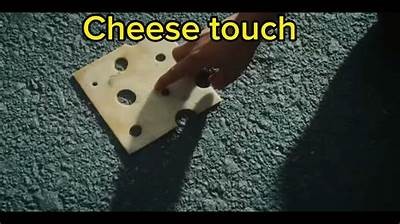Understanding the Cheese Touch Concept and Its Cultural Significance in Popular Media
The Cheese Touch is a playful yet significant element in Jeff Kinney’s popular book series, "Diary of a Wimpy Kid." This whimsical concept, which involves the spread of a mysterious “bad luck” contagion rooted in a piece of moldy cheese, serves as a metaphor for peer pressure and social dynamics among children. While it originates from a children’s literature context, its implications extend into broader cultural conversations about anxiety, friendship, and the fear of social exclusion.

The Cheese Touch first appears in the 2007 publication, where it is introduced as an urban legend at the fictional middle school of Greg Heffley, the main character. According to the story, a piece of cheese left on the playground for years transforms into a sort of cursed object that, if touched, spreads misfortune to others. As such, the Cheese Touch symbolizes various themes: the irrational fears children can harbor, the desire for acceptance, and the pitfalls of social ostracization.

The Cheese Touch operates as a narrative device that explores how children navigate their relationships. Once someone contracts the Cheese Touch, their peers socially distance themselves out of fear. This contagion mirrors real-life situations where children may shy away from others perceived as different or unlucky. The obsession with avoiding the Cheese Touch becomes a bonding experience for the non-infected group, highlighting how social hierarchies form and solidify among young individuals.

Kinney deftly uses humor to address darker themes prevalent in childhood socialization. The absurdity of the Cheese Touch allows readers to approach fears of exclusion and social failure with levity. Rather than crafting a morose narrative about bullying or isolation, Kinney uses comedy to remind readers that while social dynamics can be fraught, they can also be navigated and ultimately overcome, offering a hopeful glimpse into the human experience.

Beyond its humorous context, the Cheese Touch can be seen as a metaphorical representation of societal stigmas encountered in day-to-day life. The fear of contagion, whether physical or social, speaks to broader themes of prejudice and exclusion. Situations like being ostracized for being “uncool” or having a particular interest can resonate deeply with readers, reflecting real-life scenarios where children and adults alike grapple with the pressures to conform.

The Cheese Touch phenomenon echoes sentiments found in various popular media. For instance, contemporary films and television shows often depict similar contagion myths and fears, albeit through different lenses. Shows like "Stranger Things" explore themes of otherness, where characters face ostracization due to their uniqueness. The common thread linking these narratives is a fascination with the way fear can drive human behavior, mirroring the reactions elicited by the Cheese Touch. The Cheese Touch in Modern Context
Today, the Cheese Touch continues to be relevant as new generations of children experience similar social dynamics. As schools evolve and social media expands, children face different types of "cheese touches" – online bullying, social media pressure, and the need to fit in with rapidly changing norms. The resilience demonstrated by characters in "Diary of a Wimpy Kid" can serve as a crucial model for navigating these modern challenges. Psychological Underpinnings of the Cheese Touch
From a psychological standpoint, the Cheese Touch offers a lens to examine the behaviors associated with social anxiety and conformity. Children who fear social exclusion may engage in avoidance behaviors, mirroring those illustrated in the stories. Understanding this dynamic can help educators and parents foster environments where inclusivity is emphasized, reducing the likelihood of ostracization based on arbitrary social constructs. Educational Perspectives on the Cheese Touch
In educational settings, the Cheese Touch can serve as a discussion starter on topics related to empathy, acceptance, and social responsibility. By discussing the consequences of social exclusion illustrated in Kinney's work, educators can draw parallels to the children's real-world experiences, helping students navigate their social environments with enhanced awareness and compassion. Conclusion
The Cheese Touch is more than just a humorous story element; it is a powerful reflection of social dynamics among children. Through its playful monster, Jeff Kinney highlights the seriousness of fear, exclusion, and acceptance. As the narratives around the Cheese Touch continue to evolve, they will remain a timeless conversation starter about the trials of growing up, the importance of friendship, and the journey to find one's place in the world.
